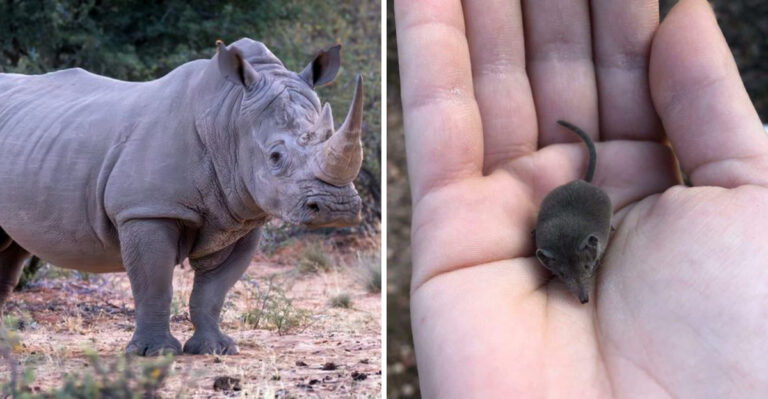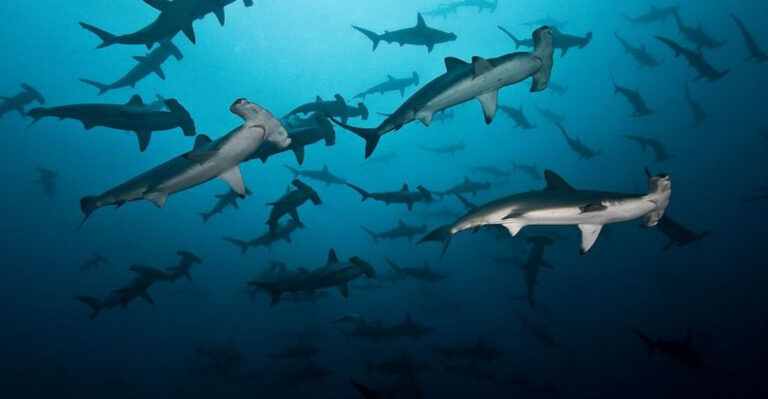Rare Majestic Albino Killer Whale Spotted Leaping From The Water Off Japan’s Coast
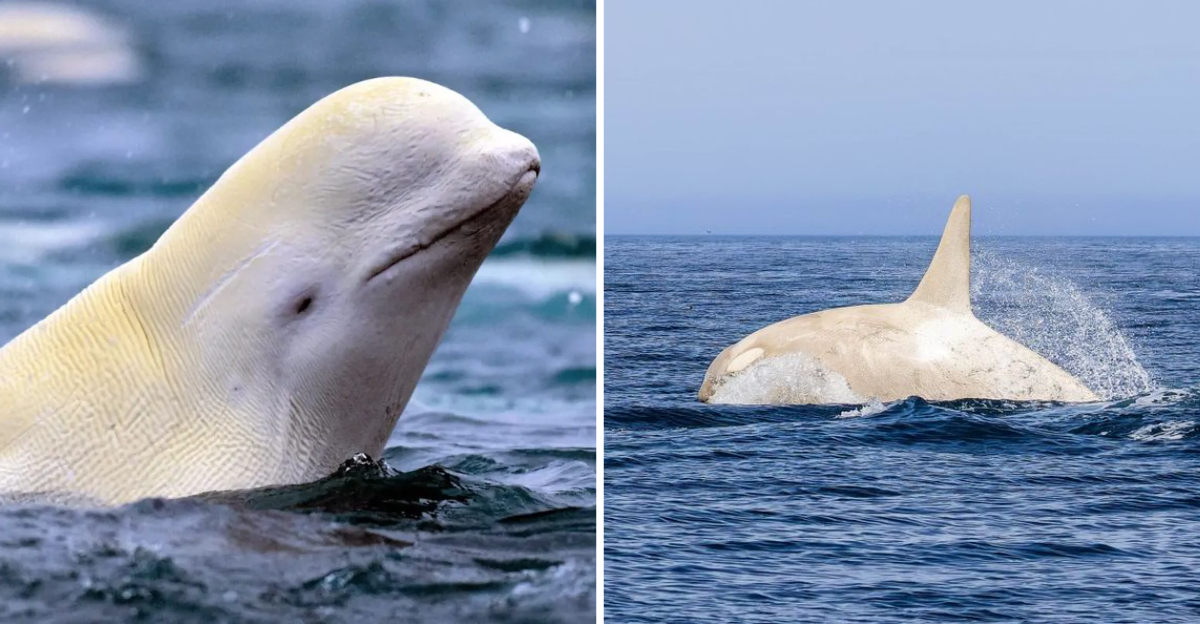
Nature continues to surprise us with its extraordinary wonders. Recently, off the coast of Japan, a breathtaking sight captured worldwide attention – a rare albino killer whale leaping majestically from the ocean waters.
This unusual marine marvel, with its gleaming white body contrasting against the deep blue sea, represents one of the rarest sightings in the natural world. Let’s explore this incredible encounter and what it means for our understanding of these magnificent ocean predators.
A Unique Albino Or Leucistic Orca Seen Near Hokkaido
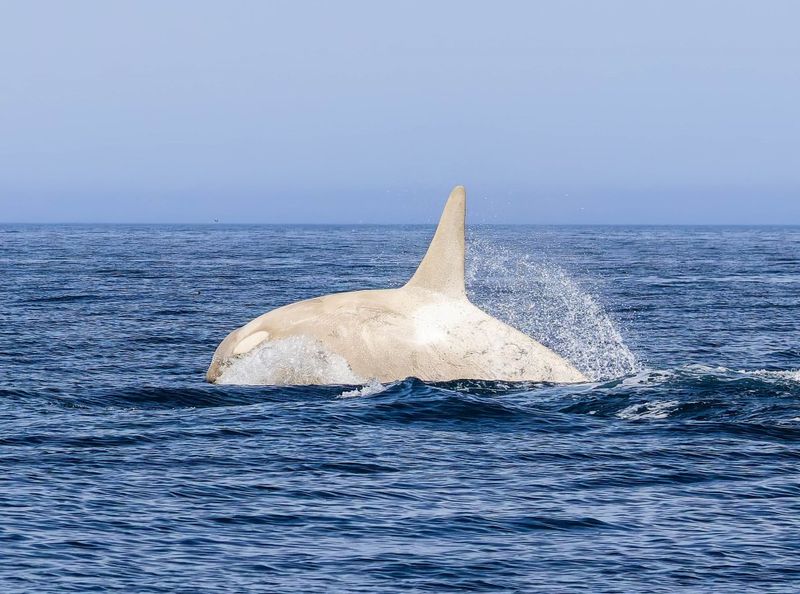
The waters around Hokkaido became the stage for an extraordinary wildlife moment when an all-white orca broke the surface. Unlike the typical black and white pattern we associate with killer whales, this specimen displayed a ghostly pale appearance from head to tail.
Marine biologists consider such sightings extremely unusual. The genetic condition causing this coloration affects perhaps fewer than 10 orcas worldwide. Local fishermen, who spend their lives on these waters, were equally amazed – many had heard stories of the ‘white orca’ but dismissed them as tall tales.
Photographer Noriyuki Hayakawa Captures A Stunning Breach
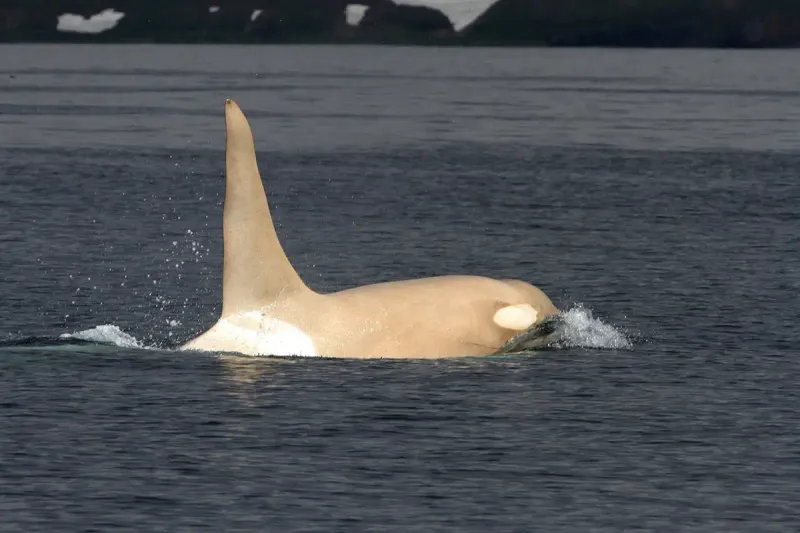
Wildlife photographer Noriyuki Hayakawa’s patience paid off in spectacular fashion. After hours of waiting in challenging sea conditions, his camera captured the moment the alabaster orca launched itself skyward in a powerful breach.
The resulting images show water cascading off the whale’s brilliant white form against the backdrop of Hokkaido’s coastline. Hayakawa described the moment as ‘otherworldly’ – the whale seemed to hang in the air momentarily, its massive body defying gravity.
Photography experts have praised the technical excellence of the shots, noting the perfect timing required to freeze such a fleeting moment.
Part Of A Small Group Of All White Orcas In Japanese Waters
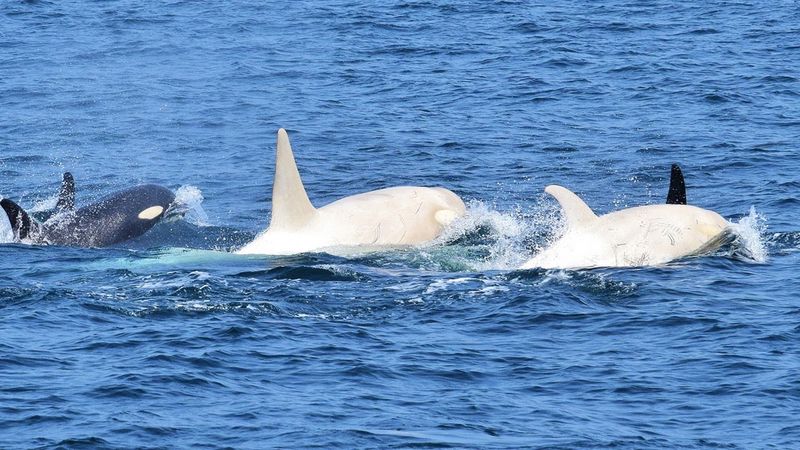
This spectacular white orca isn’t traveling solo through Japan’s coastal waters. Research suggests it belongs to a small family group of similarly pale individuals that have established territory in this region.
Marine biologists have tracked these distinctive orcas for several years now. Their unique appearance makes them easily identifiable even from satellite imagery, allowing scientists to map their movements and behaviors.
The pod seems to maintain consistent hunting patterns around specific islands. Their presence indicates healthy marine ecosystems in these waters, as orcas require abundant food sources to sustain their large bodies and active hunting lifestyle.
Scientists Aren’t Sure If It’s True Albinism Or Leucism
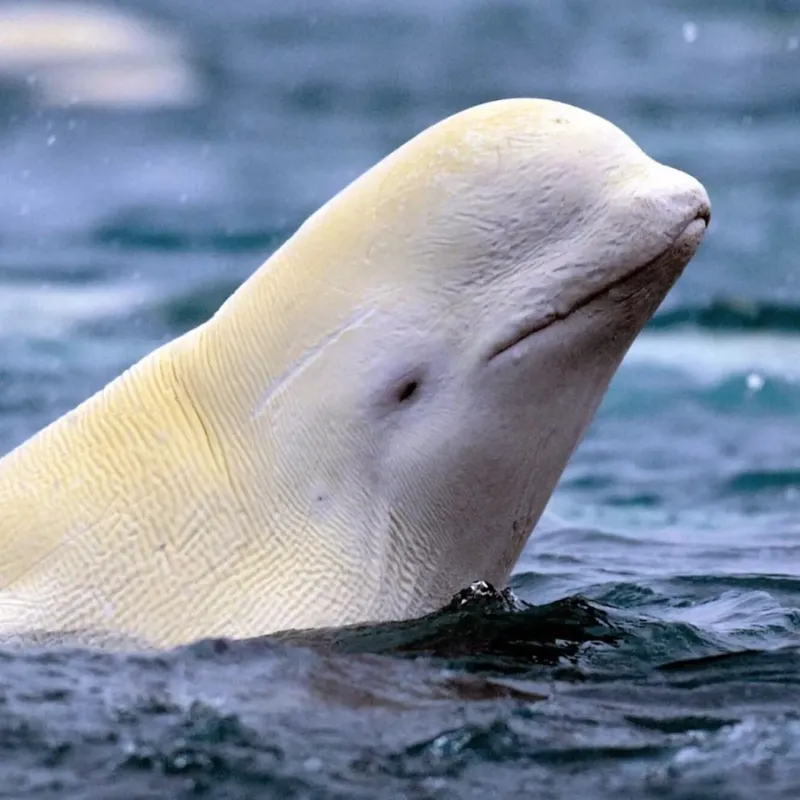
The exact nature of this orca’s striking appearance remains a scientific puzzle. True albinism results from a complete absence of melanin, typically causing red eyes and extreme sun sensitivity. Leucism, meanwhile, involves partial pigment loss while preserving some coloration, especially in the eyes.
Close examination of photographs reveals subtle yellowish patches and normally pigmented eyes. This suggests leucism may be the more likely explanation.
Without genetic testing, which would require skin samples, scientists can only speculate. Either condition is exceedingly rare in large marine mammals, making this orca a valuable subject for understanding genetic diversity in whale populations.
A Once In A Lifetime Sighting After Over A Decade Of Orca Photography
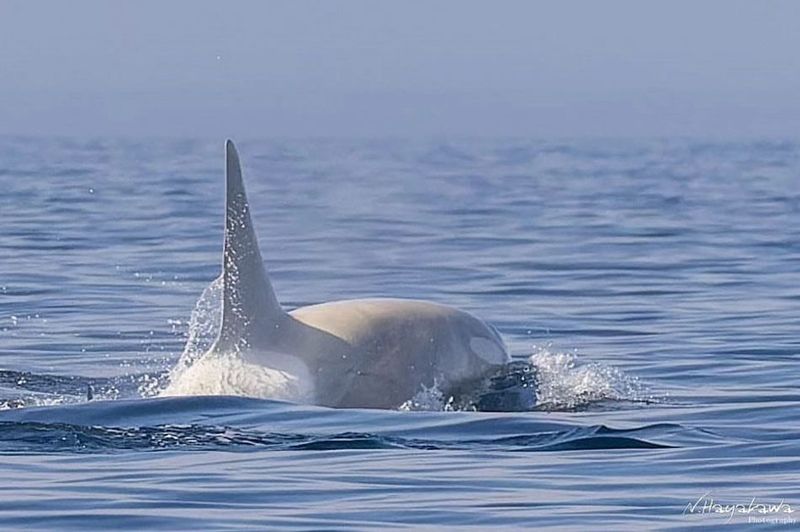
Hayakawa’s encounter represents the pinnacle of his 15-year career photographing marine wildlife. Despite countless hours at sea tracking normal orcas, he never imagined capturing this genetic marvel.
The photographer had heard rumors of white orcas from fishing crews but dismissed them as exaggerations. His preparation for this day was no different from hundreds of other expeditions – rising before dawn, checking weather conditions, and heading out with his trusted equipment.
The white orca appeared without warning on what had been an otherwise routine outing. Hayakawa’s years of experience allowed him to react perfectly despite his shock and excitement.
Only A Handful Of All White Orcas Known To Science
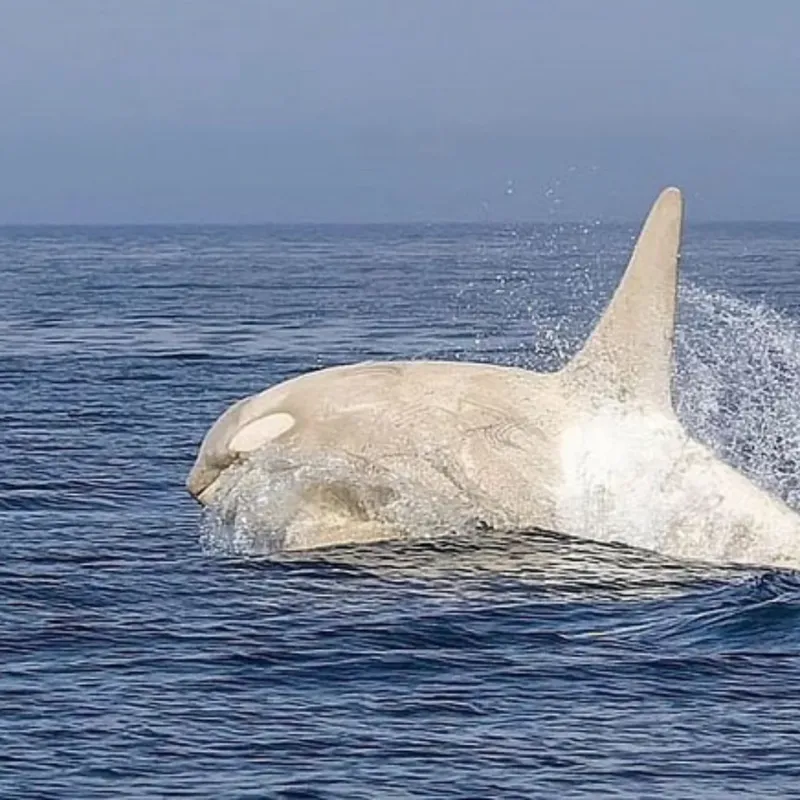
The scientific record of all-white orcas remains remarkably slim. Researchers have documented fewer than five confirmed individuals worldwide, making each sighting a significant contribution to marine biology.
The most famous white orca, nicknamed Iceberg, was spotted in Russian waters in 2010. Another, called Chimo, lived briefly in captivity in the 1970s before succumbing to health complications related to her genetic condition.
Japan’s white orca represents a crucial data point in understanding the global distribution of this rare trait. Scientists are carefully comparing photographs to determine if this is a previously unknown individual or one that has migrated from other regions.
Glowing White Color May Affect Its Health And Camouflage
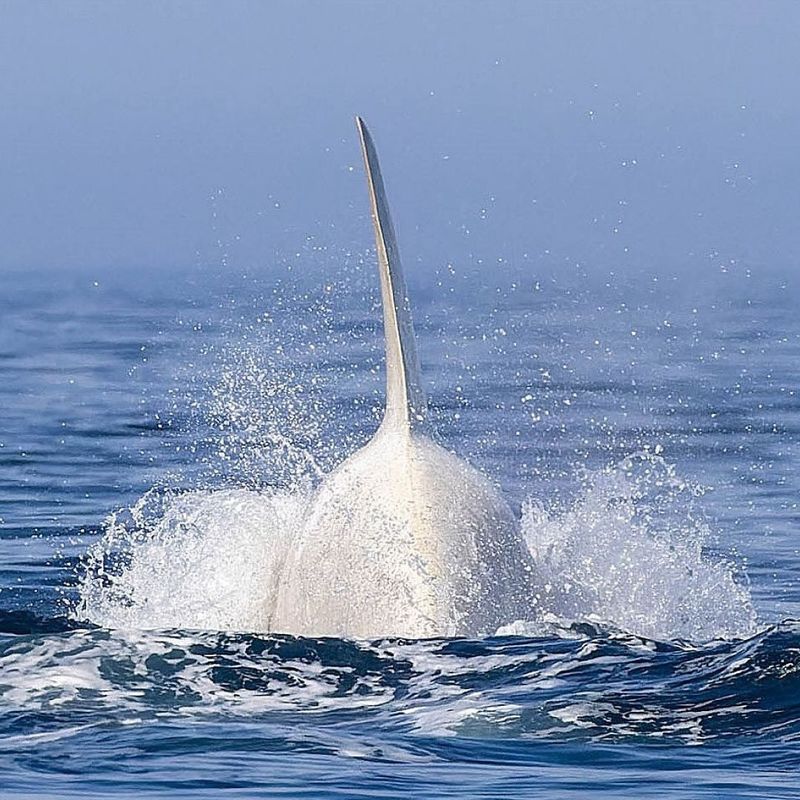
The stunning white coloration comes with biological trade-offs. Without protective pigmentation, the orca’s skin is more vulnerable to sunburn and skin damage – potentially serious issues for a surface-breathing mammal.
Hunting efficiency might also be compromised. Normal orcas rely on their black-and-white countershading for camouflage when stalking prey from below. A bright white predator stands out dramatically against the ocean’s depths.
Yet this individual appears healthy and well-fed. Scientists theorize it may have adapted alternative hunting strategies or relies more heavily on group hunting with its normally-colored podmates. The fact that it has survived to adulthood suggests remarkable adaptability.
The Rare Whale Swam With A Pod Of Normally Colored Orcas
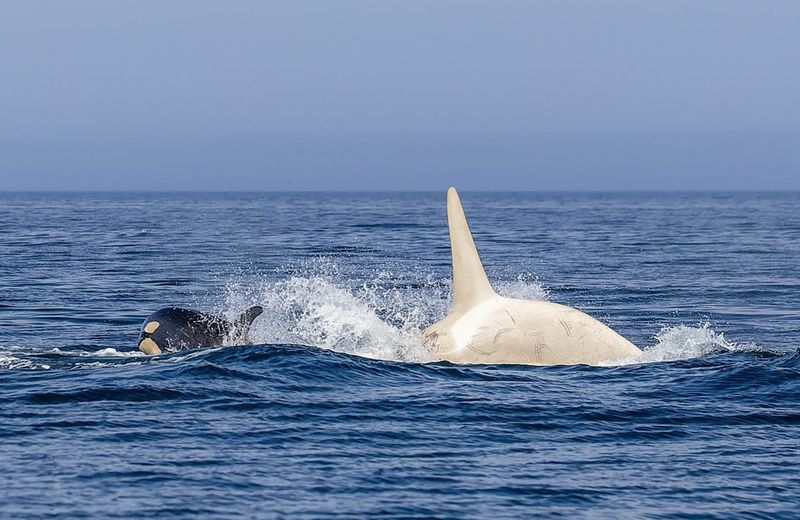
Social acceptance within orca society appears unaffected by color differences. Footage shows the white individual swimming in perfect synchronization with black-and-white podmates, engaging in all normal social behaviors.
Orcas form tight-knit family groups that stay together for life. The pod’s acceptance of this genetically different member highlights their sophisticated social structure that transcends physical appearance.
Researchers observed the white orca participating in coordinated hunting maneuvers and playful social interactions. Its position within the pod hierarchy seems typical for its age and sex, suggesting color-based discrimination doesn’t exist in orca society – a fascinating contrast to some human communities.
Spotting It Left The Photographer Shaking With Excitement
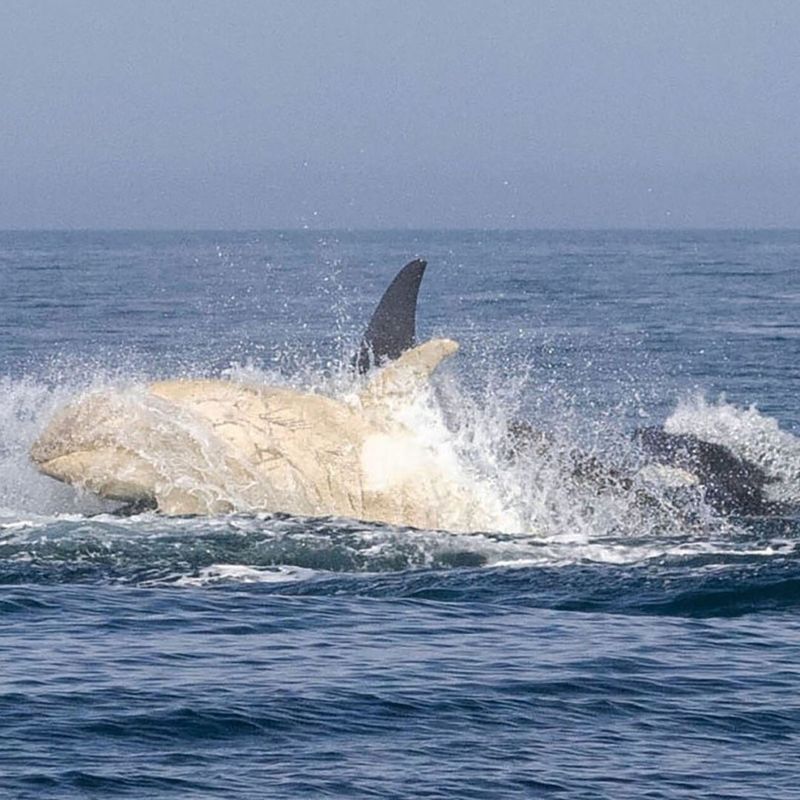
The emotional impact of witnessing such rarity overwhelmed even veteran photographer Hayakawa. He describes his hands trembling so violently he feared ruining the once-in-a-lifetime shots.
“My heart was pounding like a drum,” Hayakawa recalled. “Fifteen years on the water, and nothing prepared me for this moment.” The adrenaline rush nearly caused him to drop his expensive camera equipment.
Despite the physical reaction, his professional instincts took over. Fellow passengers on the boat reported that he worked his camera controls with remarkable composure while simultaneously exclaiming in disbelief. The resulting images capture both the whale’s majesty and the raw emotion of this extraordinary wildlife encounter.
These Sightings Offer Insights Into Orca Genetics And Conservation
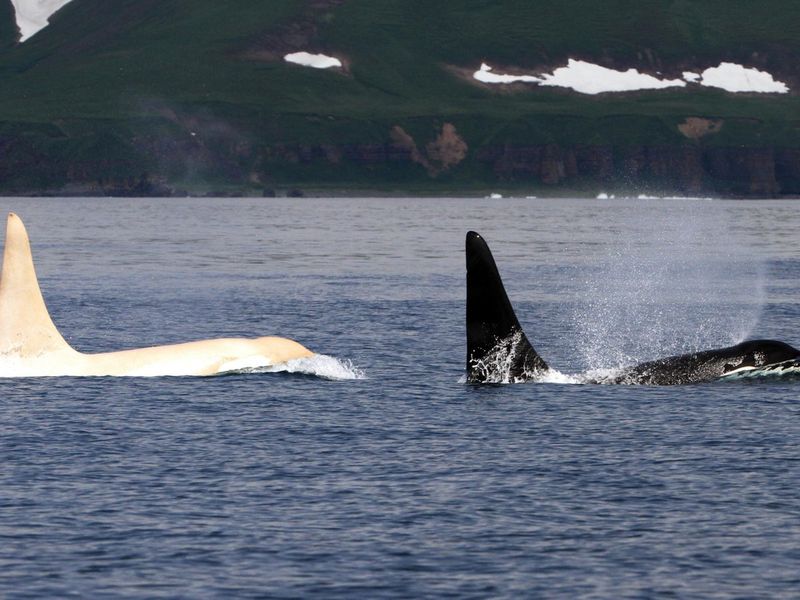
Beyond their spectacular appearance, white orcas provide valuable scientific information. Each sighting helps researchers understand the genetic diversity within killer whale populations and how rare traits persist despite potential disadvantages.
Conservation implications are significant too. The fact that such genetic variations survive in the wild suggests healthy population sizes with sufficient genetic diversity. Declining populations often show reduced genetic variation.
Japanese marine authorities have used this high-profile sighting to strengthen local conservation measures. Public fascination with the white orca has increased support for protected marine areas and stricter fishing regulations in the region – proving that exceptional wildlife can inspire tangible conservation action.




